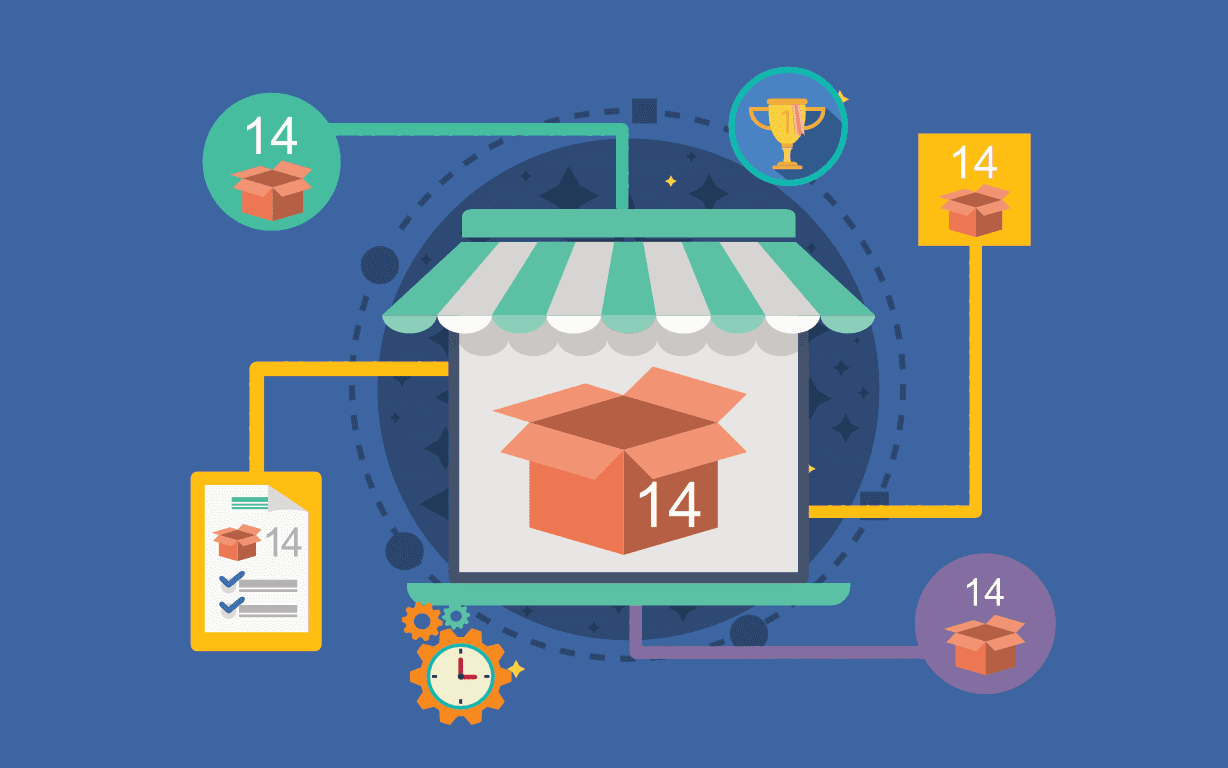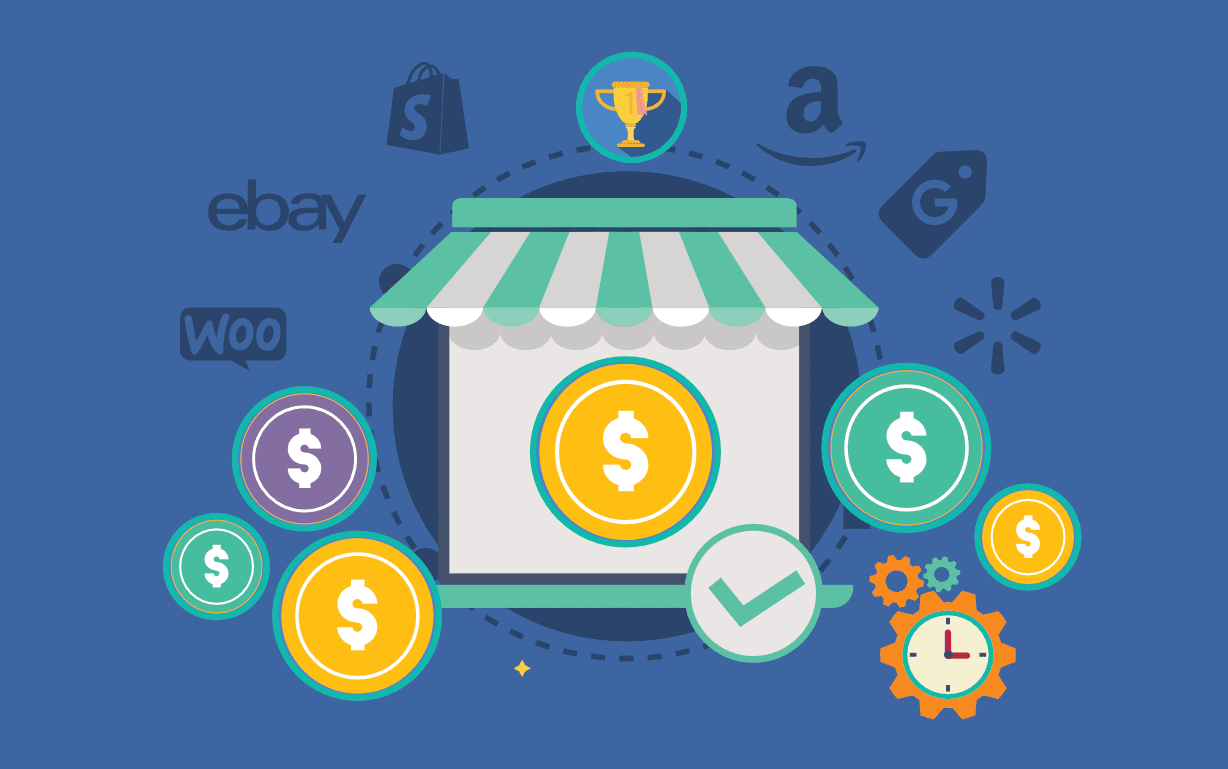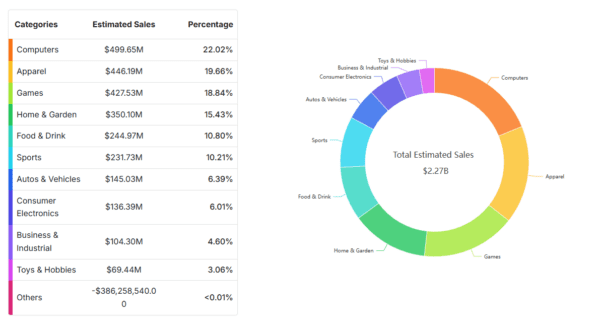Recent years have seen the term “E-Commerce” increasingly being touted as the future of the business landscape. E-commerce trends have been blamed for the fall and bankruptcy of many once-iconic companies, such as fashion retailers Forever 21 and Zara, both of whom have been shutting down their brick-and-mortar stores across the globe to focus on building a sustainable digital storefront.
To quote Investopedia, “E-Commerce is a business model that lets firms and individuals buy and sell things over the Internet.” Thanks to the rise of the Digital World, as well as our growing hyperconnectivity, this is quickly becoming the best way to do business.
E-Commerce has a long and colorful history, taking off in the early 1990s when Jeff Bezos started selling books online. This was a relatively novel and unconventional idea at that time – one that many didn’t think would rise to the level that it is today.
Since then, though, E-Commerce has improved by leaps and bounds; its convenience and user experience are unparalleled and the variety of things that can be bought through the Internet are practically limitless. From groceries to baby diapers, and from pet food to furniture – nearly everything is now available online.

The figures surrounding the E-Commerce industry are staggering; according to the research firm, 99Firms, over 95% of all purchases are expected to be conducted via the Internet by the year 2040. To add to that, experts largely agree that with over two billion digital buyers across the globe, retail online sales could be expected to reach $4.13 trillion in 2020.
The majority of these purchases are made via smartphone apps, which companies are beginning to adopt and incorporate into their own business models. Nowadays, Amazon isn’t the only digital channel where consumers are buying their wants and needs. Nearly every brand has their own designated website and app where purchases can be made, along with a whole slew of other transactions, including perusing their current catalogs and browsing through any upcoming collections.
Additionally, online shopping can now be done through popular social media platforms, with Instagram and Facebook dominating this market. In China, many are also buying and selling through the messaging app, WeChat, boosting the country’s economy.
The current circumstances surrounding E-Commerce movement may be considered to be rather unbelievable and astonishing, however, this landscape is still poised to make a ton of huge transformations, all of which will undoubtedly alter how we live our lives today.
Because of this, it goes without saying that the future of E-Commerce & the direction its headed is incredibly exciting.
With that, here are some of the top E-Commerce trends that we’re bound to see in 2020, as well as a few predictions for the years to come.
Watch Out for E-commerce Trends in Emerging Markets
E-Commerce is incredibly established in the West; Americans alone are expected to spend nearly $710 billion buying things online, which represents an 18% increase from previous years. The United States has also seen a significant reduction in purchases from brick-and-mortar stores, which is why many start-ups and small businesses have gone completely online.
However, this doesn’t mean that E-Commerce is completely limited to North American and European consumers.
Experts largely agree that emerging markets will play a crucial role in the future of E-Commerce; countries like China, Brazil, Russia, and South Africa are positioned to change this landscape, thanks to the incredible growth of their economies, as well as the increase in disposable income of their citizens.

To add to that, nearly three billion consumers from these markets will have access to the Internet by the year 2022 – a figure that represents a ton of potential customers and sales. Relatively untapped by online businesses, thus far, these people are understandably looking for more convenient ways to purchase their favorite products and will undoubtedly switch to digital storefronts easily.
With this in mind, brands all over the world are challenged to adapt their marketing strategies, and even their entire business models, to take advantage of this phenomenal and unprecedented opportunity. These consumer bases have been traditionally overlooked and ignored but this is bound to change in the near future. It’s clear that those who will continue to disregard the part that emerging markets will play in the world of E-Commerce shift will soon see find their businesses stagnant, unsustainable, and unable to keep up with the rest of the competition.
Increasing Instances of Social Shopping
The past few years have seen the creation of an entirely new industry, thanks to the prevalence and power of social media platforms. Nowadays, influencers are the new marketing schtick, replacing the billboards, television commercials, and print advertisements of old.
The statistics speak for themselves; approximately 19% of marketers are expected to spend between $1,000 to $10,000 annually on influencer marketing in 2020 with over 7% of companies planning to invest more than a million dollars. Businesses have seen how effective and convenient influencers are, with their return on investment much higher than traditional marketing channels.
This new way of marketing to consumers usually comes in the form of influencers tagging the brands that they’ve partnered with on photos and videos that they publish on social media, accompanying these with engaging and witty captions that are meant to encourage their followers to check out the products or services that they’re shilling. While this has proven to be extremely successful at growing customers and sales, it can’t be denied that incorporating a feature that allows direct shopping from such posts would be much more effective.

This is why the biggest social media platforms in the world are looking into making the content generated on their apps and websites. For instance, Instagram recently launched a “shoppable post,” which allows users to transform their personal accounts into their own digital storefront. Those with business accounts can also enable product tags and stickers in their posts, making it easier for their consumers to make a purchase the minute something catches their eye.
Without a doubt, social shopping would make purchasing more productive and immediate, resulting in a whole slew of ramifications in favor of businesses. Not only will companies now have access to a new and unconventional distribution channel, but they’ll also have the opportunity to grow their business even further, growing both their consumer base and their sales at the same time.
More importantly, though, social shopping turns a brand’s marketing collaterals into a sales channel, due to how social media users can shop directly from whatever graphics, images, and videos they publish. This would significantly reduce their expenses, increasing their profit margins and helping them build a more profitable, more sustainable business.
A More Personalized E-Commerce Experience
Today, marketing is becoming more and more personalized; Facebook and Instagram allow advertisers to set limits to their collaterals, restricting target audiences based on a whole host of factors, including demographics, location, income range, and even according to the last website that they visited.
The marketing industry has largely perfected this personalized experience but the next few years will see online shopping going down the same route. According to the multinational professional services powerhouse, Accenture, nearly 33% of customers have stopped purchasing from businesses whose sales and distribution channels have little to no personalization at all.

With this, it’s safe to say that in the world of E-Commerce, personalization will no longer be a future trend, but rather, a standard required from all those wishing to set their online stores apart.
E-Commerce personalization can be implemented in a ton of different ways; for instance, companies can launch targeted cart recommendations, showing customers products relevant or similar to the ones that they’re already looking to purchase. Or, they can adjust their website’s navigation processes based on the visitor’s interests, creating a more customized shopping experience and sales funnel that will keep them hooked on the page longer.
Nowadays, online shopping is notorious for the whole slew of spam e-mails and messages that they result in, which many consumers consider to be a source of annoyance. With personalization, however, these messages can be adjusted to fit their specific behavior and interests. This would certainly increase customer loyalty, helping them feel more connected to the brand.
The Growing Trend of Mobile Shopping
Amazon, as well as other E-Commerce platforms dominating the Southeast Asian markets, such as Shopee and Lazada, have all made their services available on smartphone apps. Thanks to this, their customers can easily browse through their available products and make purchases without ever having to turn on their laptops and computers, which definitely adds to the comfort, convenience, and accessibility of the shopping experience.
After all, the majority of the world’s population may not own a personal computer, but they do own a smartphone.
The mobile market may already be making waves in the world of E-Commerce and the Insights show over 70% of online shopping traffic in the year 2018 made over phones. The next few years will only see this grow, though, due to the many advantages that shopping over mobile brings.

Brands and companies will be challenged to develop their own E-Commerce platforms, ensuring that these will be compatible with mobile software, despite the latter’s limitations. One of the main things that they have to keep track of is their App Store Optimization (ASO), optimizing this to increase their app’s visibility and ranking to set themselves apart from the rest of the competition.
Naturally, their add to cart and checkout processes must also be re-evaluated, re-assessed, and re-designed; these systems on their website may not necessarily be compatible with a mobile app, which would undoubtedly present a few critical issues and challenges for their customers who wish to avail of their products and services through their smartphones.
More importantly, enhancing the capabilities of their mobile market means taking care of push notifications, designing these to promote and engage users, instead of annoying them. This can be an incredible way to deliver a brand’s special promotions, exclusive discounts, and pressing updates but this has to be implemented strategically and deliberately.
Cryptocurrency as a Viable Payment Method
The near-ubiquity of E-Commerce has done wonders for the number of payment options that are now available for consumers; Google Pay, PayPal, as well as Apple and Samsung’s own mobile wallets, are now increasingly being accepted by the majority of platforms and online stores.
Back then, the only viable options were credit and debit cards but this was a rather restricting feature that meant only those privileged or wealthy enough to avail of such payment methods could take advantage of everything that E-Commerce offered. This has proven to be quite limiting for businesses and companies, most of whom saw their digital storefronts restricted to a very niche market or to a limited segment of their customer base.
The acceptance of those other payment options, though, skyrocketed the popularity and accessibility of E-Commerce. Nowadays, practically everyone can buy things online, regardless of whether or not they had sufficient money to put in a debit card of whether their credit scores were high and trustworthy enough to make them eligible.
Despite the availability of Google Pay, PayPal, and other such digital payment services, customers are still demanding more, which is why companies are leaning towards cryptocurrency currently as another viable option. Bitcoin, Ethereum, and even Ripple XRP may be used for large business transactions today, however, the world of E-Commerce has been looking into making these feasible for simple, every day, and mundane transactions, such as grocery purchases and retail shopping.

One of the biggest examples of online stores adopting cryptocurrency is Overstock.com, an Internet retailer based in Utah that boasts of luxury and designer goods at extremely low prices. Just recently, the company announced that they would be accepting Bitcoin as a payment option on their website, which has made them way more accessible to their target market compared to their competitors.
Cryptocurrency as a viable payment option allows customers to make more secure financial transactions online, even if they’re purchasing from a website or platform that they’ve never tried before. More than that, though, it would assuage fears over scammers and “sketchy” online stores – concerns that are understandably running rampant these days.
More Shift Towards Automation
With the rise of the Digital Age and online shopping, brick-and-mortar stores have been rendered nearly obsolete; in fact, a recent report by the world’s premier financial services company, Credit Suisse, stated that one in four malls in the United States was expected to close by the year 2022. Exorbitant rent, a decrease in foot traffic, and the high overhead costs associated with a physical shop had spurred many businesses to transition to an online storefront, where their only expenses have been practically relegated to marketing, inventory, and the like.
Despite this reality, many digital stores are still heavily reliant on the labor force and human capital, most of whom are responsible for uploading products, updating inventories, creating website copy, and handling customer service inquiries. This has proven to be effective, so far, but it can’t be denied that with the path E-Commerce is posed to take, humans may soon serve to be a hindrance and an impediment, rather than an advantage.
For instance, emerging markets will definitely play a role in defining the future E-Commerce direction; however, human employees are restricted to work hours and holidays in their own country and timezone. What happens when a customer from India is looking to chat with a brand representative regarding an urgent matter? Or, when a buyer from Russia received a faulty product and would like to have a refund? Naturally, these people must now wait for more than half a day until an actual, living, and breathing individual comes along to sort out their problem but this buffer time could spell disaster for the business. Not only would their reputation and image decrease, but it could also spur their customers to go with their competitors instead.
Because of how E-Commerce is expected to play out in the next couple of years, automation is increasingly being perceived as the solution to these pressing issues and concerns. Automation would eliminate the manual, repetitive, and time-consuming tasks that eat away at a company’s productivity – updating inventories and uploading SKUs being the prime examples.

This trend would also allow brands to streamline their tracking and reporting, which means that they could gain much better insight from facts and figures generated by an unbiased, all-seeing computer, rather than their employees who are prone to human error and oversights.
Perhaps one of the biggest areas that automation could benefit a business in is fraud. Dishonest and illicit transactions are one of the biggest issues that plague the E-Commerce industry, due to the number of scammers and demanding customers looking to take advantage of the lack of human interaction. Nowadays, a company usually designates a particular employee – or even an entire department – to cross-check orders with shopper purchase histories to identify whether the individual is legitimate and actually looking to push through with their order.
Without a doubt, automated fraud protection embedded into their platform would reduce the risk of such transactions, preventing suspicious and possibly malevolent orders from being fulfilled, allowing the brand to avoid the ensuing headache and costly chargebacks.
The majority of businesses today are also heavily reliant on human Insights, technology, and intelligence, all of which are, unfortunately, quite restricted. However, automation goes hand-in-hand with artificial intelligence, which is bound to provide more in-depth information about a company’s operations – sometimes, even in real-time. This would result in a more extensive overview of the inner-workings of their business, which would certainly be a huge benefit to firms and organizations everywhere.
This hasn’t gone unnoticed by those in the E-Commerce industry with worldwide artificial intelligence and process automation expenditures expected to go beyond $15.4 billion by the year 2021. Failure to adopt these new technologies could potentially spell bankruptcy and defeat for businesses all over the world.
Sustainable E-Commerce Movement
The first few years of E-Commerce were quite interesting, to say the least. While affordable plastic packaging and fast fashion have both been great for our bank accounts, they’ve been nothing but disastrous for our environment. Global discourse now primarily revolves around global warming and climate change – two pressing concerns that are bound to change our world, as well as how we interact with each other, for good.
People are now becoming more aware of their carbon footprint and the impact that they have on Mother Nature, with many calling for brands to adopt a more environmentally-friendly and sustainable business model. Corporate social responsibility and being aligned with a particular social cause used to be enough, but today, consumers are demanding companies to “walk the talk,” imbuing the values that they proclaim themselves to hold in high-regard into every single facet of their operations.
With this, green manufacturing practices, eco-friendly supply chains, and a reduction in waste packaging are just some of the changes that we’re bound to see in E-Commerce in the next few years. Companies will be looking into cutting waste and environmental degradation while still maintaining their efficiency and profitability, as well as their market value.

This drift towards sustainability isn’t just limited to a company’s operations and business models, though. Customers nowadays are also demanding for workers to be treated humanely, thanks to growing awareness over the plight of laborers in countries like Bangladesh and China. Sweatshops and factories in these countries are known for their inhumane conditions and tendency to hire children, which is why consumers are calling for brands to be more transparent over the lowest rungs of their supply chains. This shift in consumer behavior is a welcome change.
E-Commerce shift geared towards the good of the environment may transform the lives of many, but they could also mean higher prices and an increased inconvenience for the end-consumer. Overall, companies will be challenged to weigh whether they place more importance on their profit margins, business, and the bottom line over their sustainability.
Final Thoughts
It’s safe to say that E-Commerce is so prevalent in our world today that it has nearly become omnipresent – a force whose ramifications are seen and felt every single day. However, this landscape is still bound to change in the years to come, thanks to the whole slew of developments and advancements that are currently being worked on or have recently been introduced.
Nowadays, companies are challenged more than ever to swiftly adapt to this rapidly-changing landscape. Without a doubt, not doing so could lead to disastrous results, even spelling the end for their business.
















